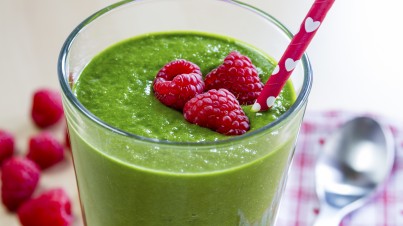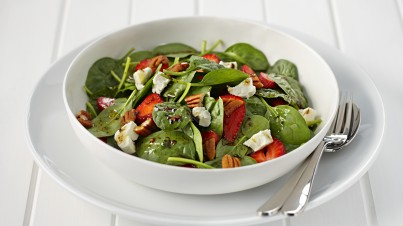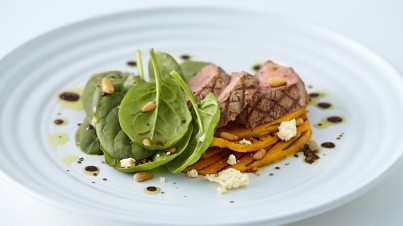Spinach is a leafy vegetable of the Amaranth family with origins based from central Asia. Leaves are rich in nutrition and its culinary use gained popularity centuries ago due to availability in early spring when fresh vegetables were scarce.
Today, it is widely used and available all year round. From fresh baby leaf in salads or slightly cooked ever so quickly to retain nutrition, freshness and taste in a number of dishes. It's a very versatile vegetable that's well worth considering as an addition to your everyday meal plans.
How to prepare
Mostly, baby or bunched leaves are available fresh either loose or packaged in bags/sleeves, and only require a good wash over and drained. It's not necessary to remove leaf stalks as they're completely edible, however if bunched, just trim off the root base.
Frozen packs can be found in supermarkets, and can offer convenience for addition to cooked dishes.
Buyer's and storage guide
Look for spinach leaves that are fresh are vibrant without any signs of yellowing or browning.
It's best to enjoy fresh spinach straight away and use within a day or two. If necessary it will store in the refrigerator for up to two days. It's further suitable, if you have an additional supply, to blanch quickly in hot water, drain and freeze. Following freezing though, it's only suitable for use in cooked dishes.
Serving
- Sauteed slightly together with some mushrooms, on top of some crusty bread and a soft poached egg, salt and pepper - the perfect brunch
- Spinach salad with raw mushrooms and almonds
- Added fresh to any salads, not need to cut up just add leaves whole, and a good handful at that
- Fresh leaves added to some roasted pumpkin, beetroot and pine nuts
- Along with your favourite pasta creation, toss through some fresh spinach just prior to serving - the heat will wilt the spinach slightly adding colour and texture
- Ideal for using as a filling for wraps with thinly sliced carrot and cucumber, halved cherry tomatoes and some smoked salmon



